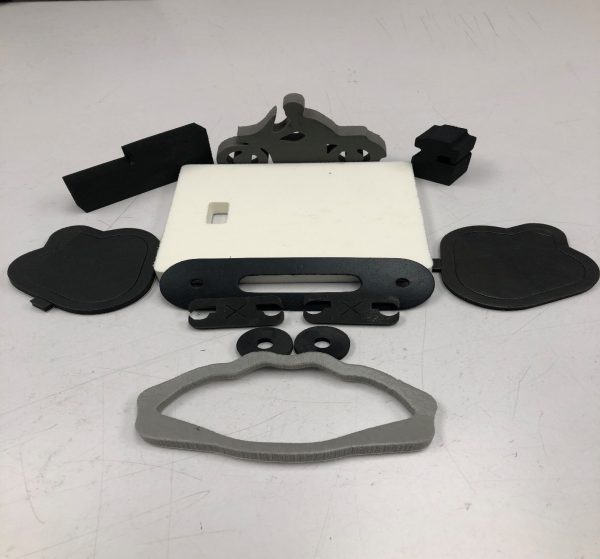 I’ve always liked the term “workhorse”. Some might think that anything called workhorse is common, unremarkable, or just boring. I’ve always thought workhorse is a compliment. It means strong, reliable, and able to work day in and day out without drawing a lot of attention to itself.
When considering gasket materials, the workhorse analogy is very useful. There are a handful of gasket materials that do an excellent job for 75-80% of gasketing and sealing applications. The “thoroughbred” gasketing materials such as silicones and fluroelastomers are highly specialized. They have broader performance properties especially for low and high temperature exposure but come with a much higher price tag.
I’ve always liked the term “workhorse”. Some might think that anything called workhorse is common, unremarkable, or just boring. I’ve always thought workhorse is a compliment. It means strong, reliable, and able to work day in and day out without drawing a lot of attention to itself.
When considering gasket materials, the workhorse analogy is very useful. There are a handful of gasket materials that do an excellent job for 75-80% of gasketing and sealing applications. The “thoroughbred” gasketing materials such as silicones and fluroelastomers are highly specialized. They have broader performance properties especially for low and high temperature exposure but come with a much higher price tag.
 I’ve always liked the term “workhorse”. Some might think that anything called workhorse is common, unremarkable, or just boring. I’ve always thought workhorse is a compliment. It means strong, reliable, and able to work day in and day out without drawing a lot of attention to itself.
When considering gasket materials, the workhorse analogy is very useful. There are a handful of gasket materials that do an excellent job for 75-80% of gasketing and sealing applications. The “thoroughbred” gasketing materials such as silicones and fluroelastomers are highly specialized. They have broader performance properties especially for low and high temperature exposure but come with a much higher price tag.
I’ve always liked the term “workhorse”. Some might think that anything called workhorse is common, unremarkable, or just boring. I’ve always thought workhorse is a compliment. It means strong, reliable, and able to work day in and day out without drawing a lot of attention to itself.
When considering gasket materials, the workhorse analogy is very useful. There are a handful of gasket materials that do an excellent job for 75-80% of gasketing and sealing applications. The “thoroughbred” gasketing materials such as silicones and fluroelastomers are highly specialized. They have broader performance properties especially for low and high temperature exposure but come with a much higher price tag.